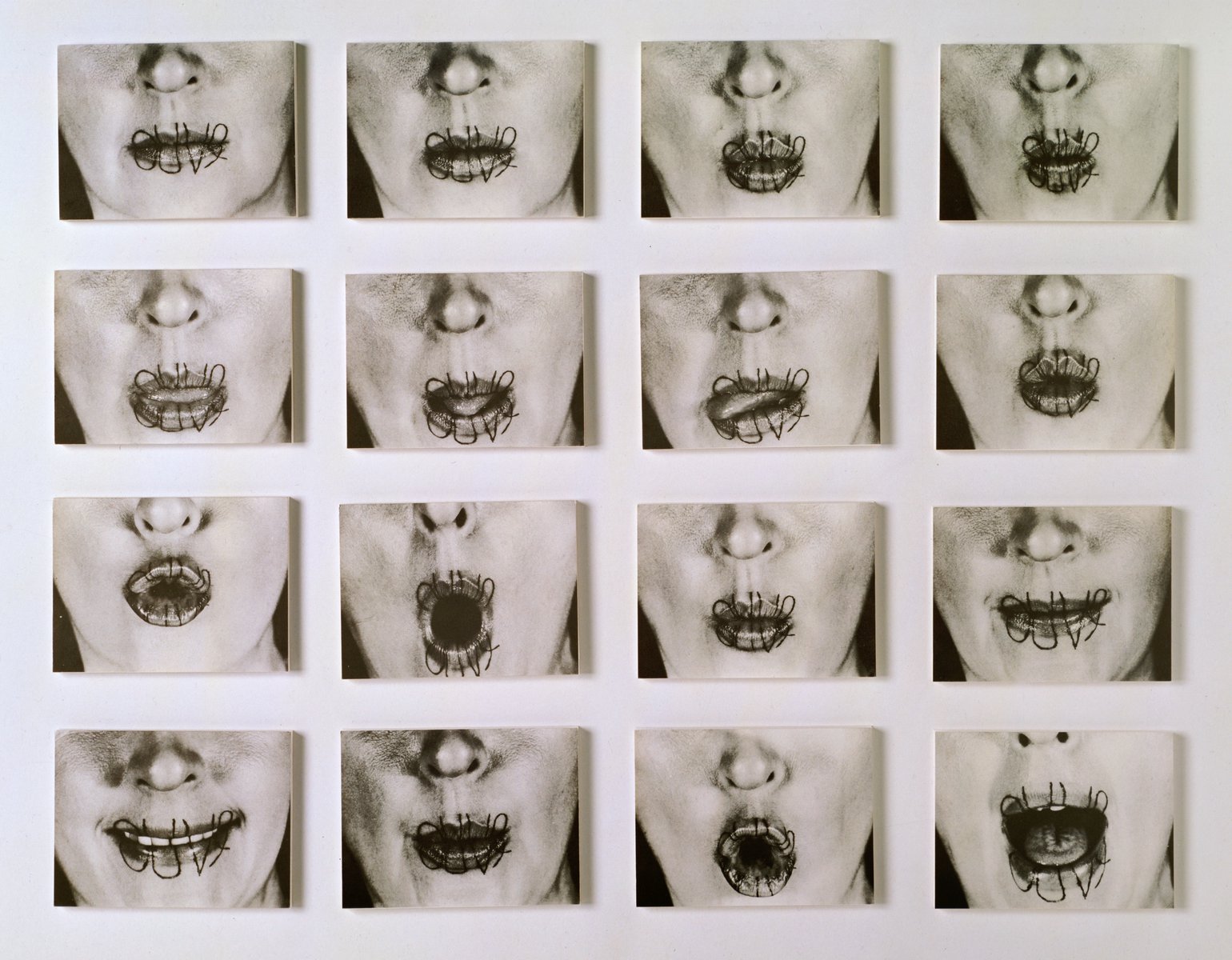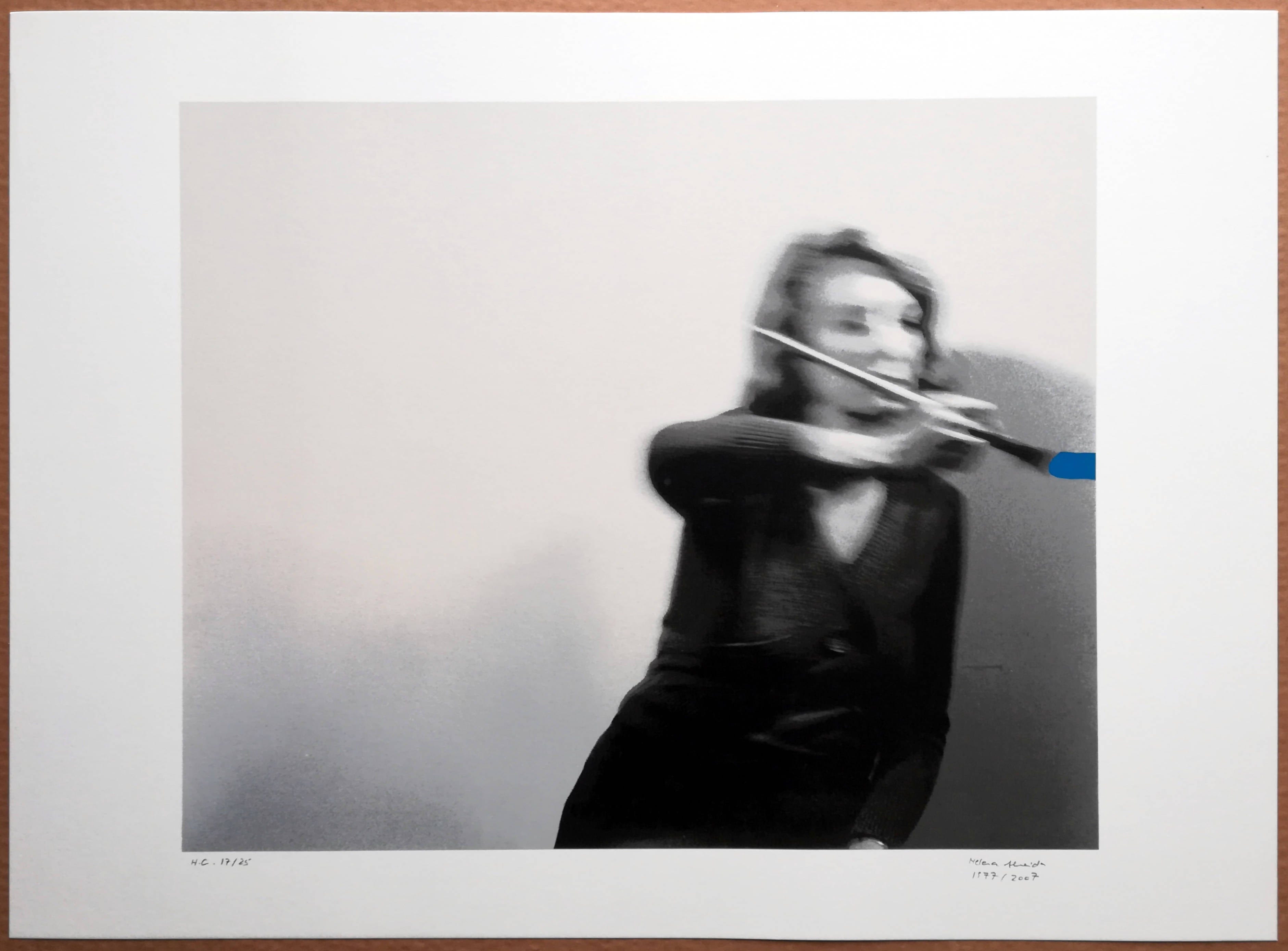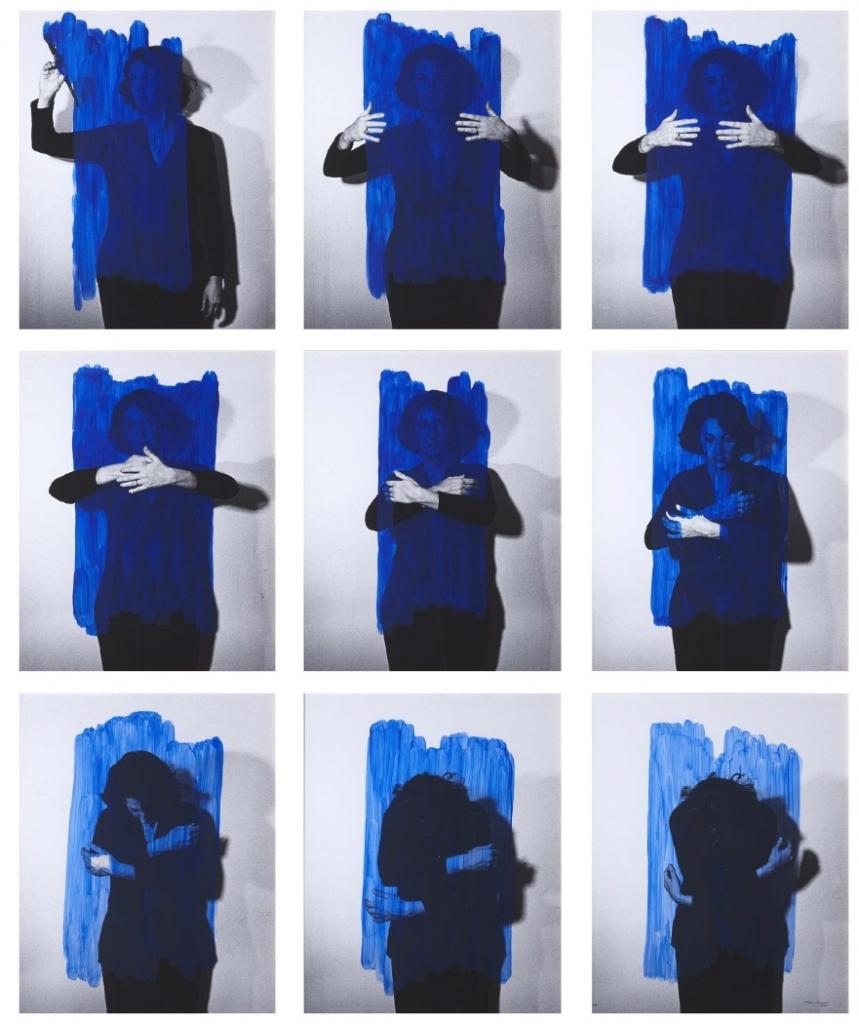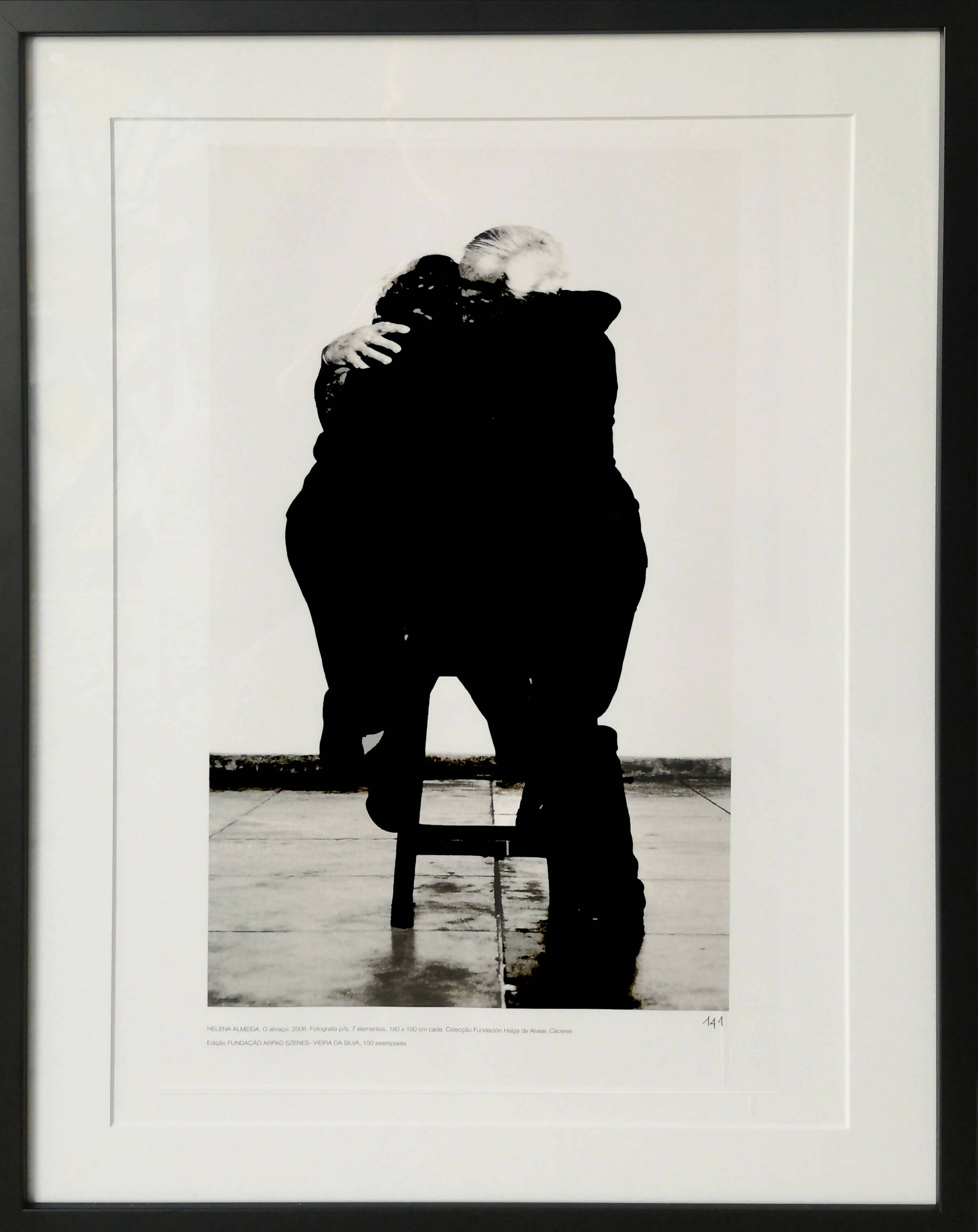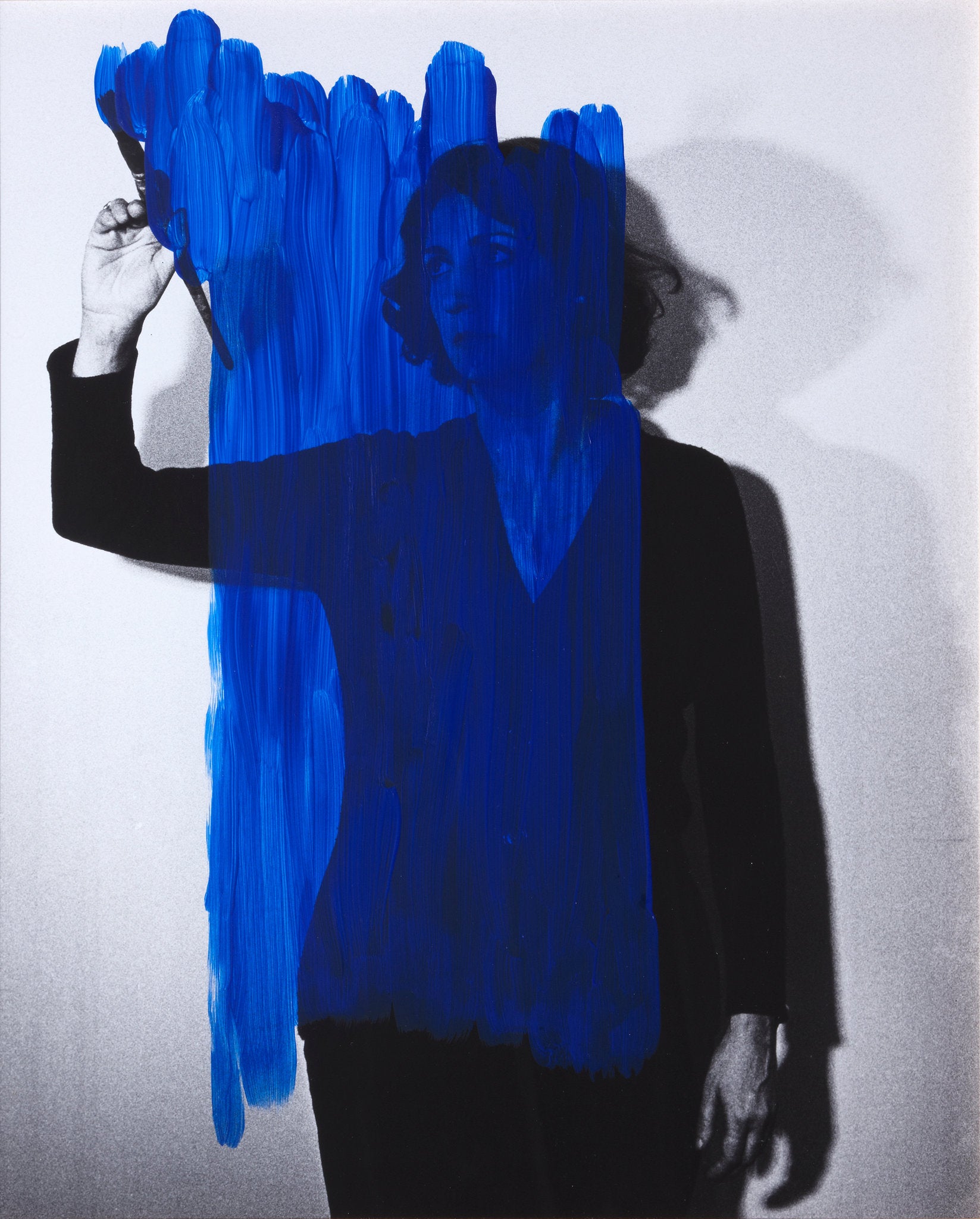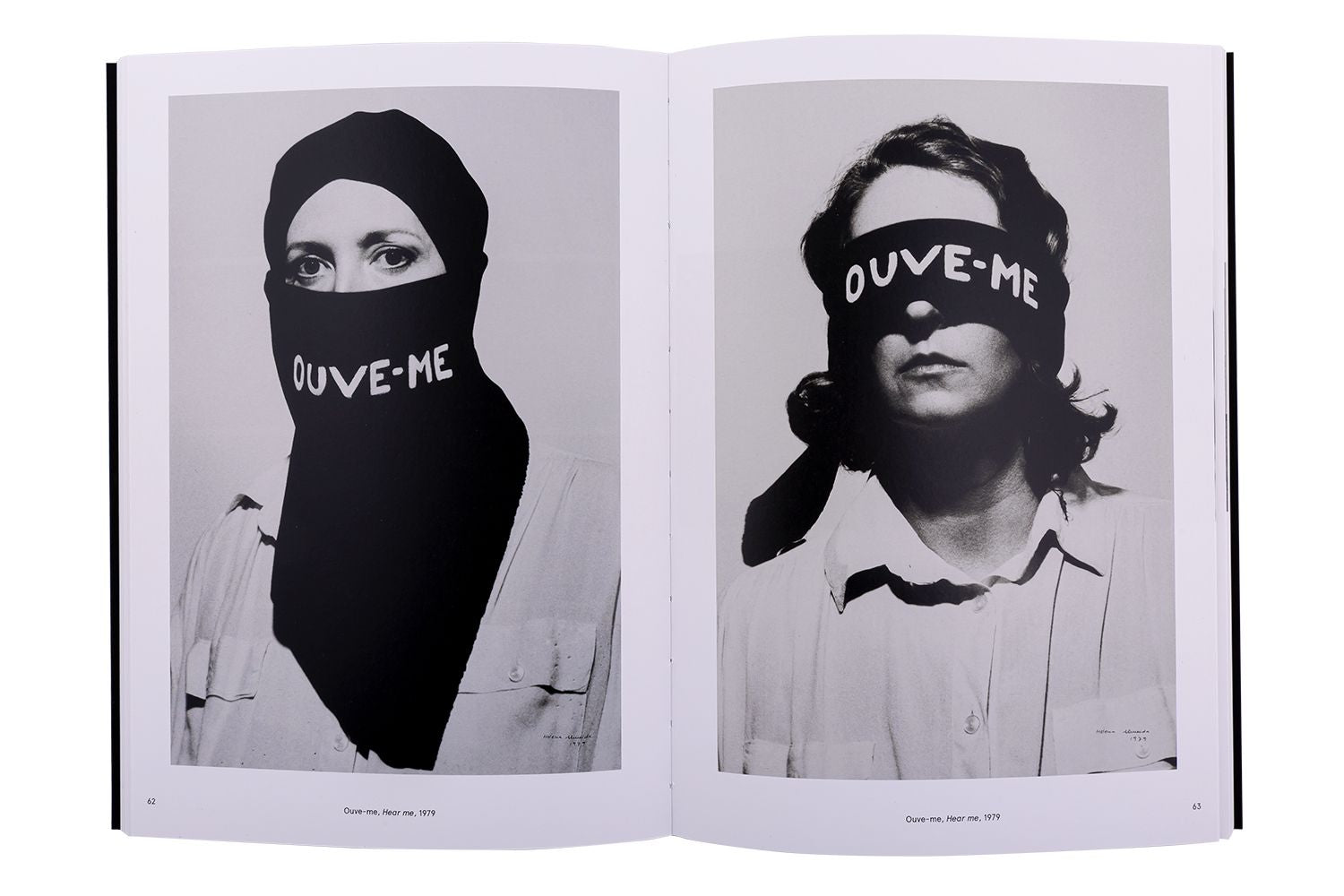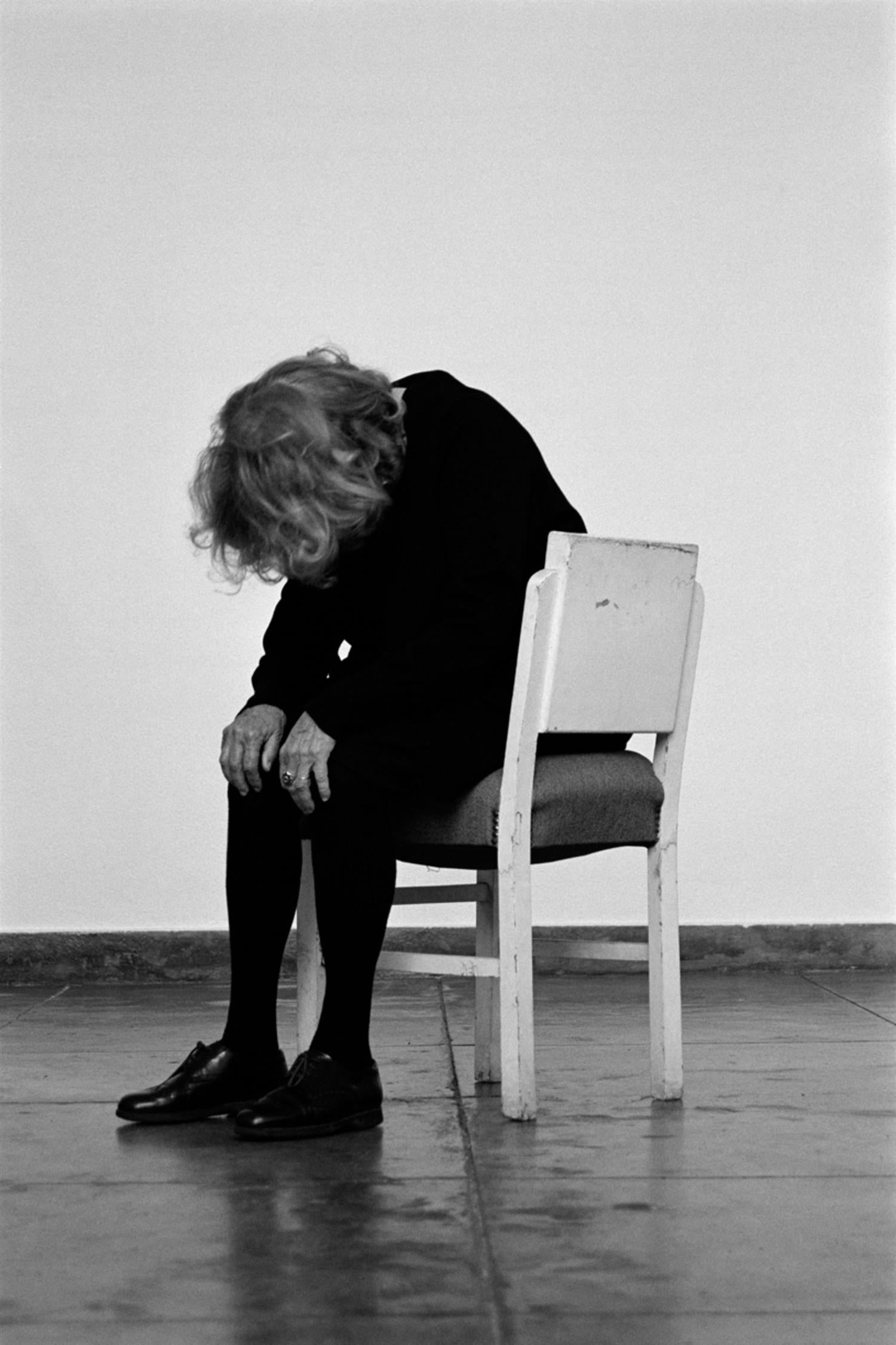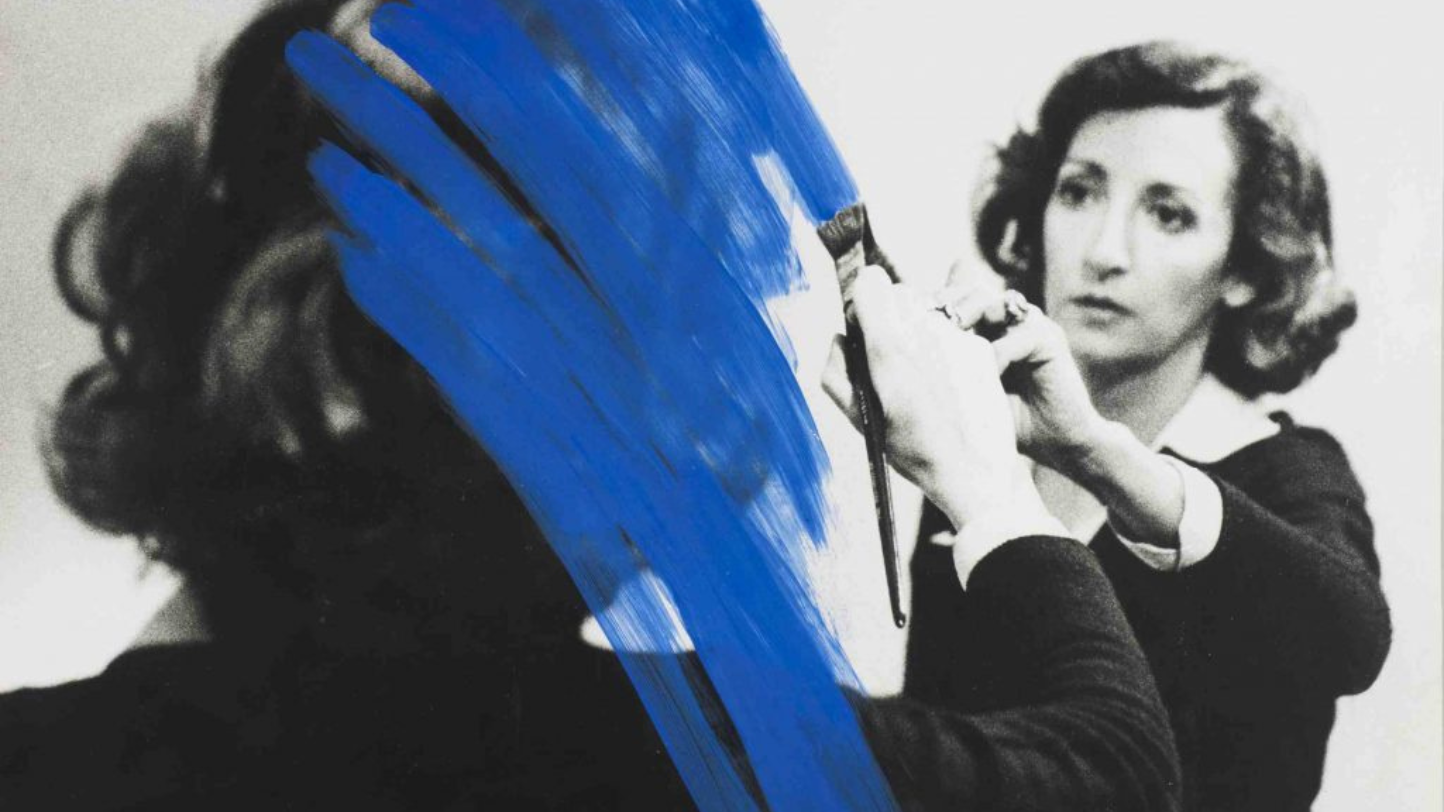
Who was the Portuguese artist Helena Almeida?
Helena Almeida was a Portuguese artist widely recognized as an unavoidable figure on the international contemporary art scene, who was born in 1934, in Lisbon, Portugal, and lived and worked until September 2018. Helena Almeida studied Painting at the Escola Superior de Belas-Artes de Lisbon, where he began to develop his artistic practice covering photography, video and drawing, based on constant research into the language of painting.
One of the distinctive features of Helena Almeida's work was her conceptual approach, in which she questioned and challenged the boundaries of painting and art in general. He explored the tendency towards anthropomorphization by using his own body as the object and subject of his paintings, although he emphasized that his images were not self-portraits in the traditional sense. His body frequently appeared in the photographs he took, but his face was often hidden.
Helena Almeida represented Portugal in important artistic events, such as the Venice Biennale, on two occasions (1982 and 2005), and the Sydney Biennale, in 2004. Her work has also been exhibited in renowned museums and galleries around the world, including the Tate Modern, in London, and the Fundación Telefónica, in Madrid.
Throughout her career, Helena Almeida challenged artistic conventions and brought a new perspective to contemporary art. He explored the relationship between the body, space and the work of art, using different media, such as photography, video and drawing, to express his ideas. Her original approach and her constant search for experimentation and reinvention of the language of painting have made her an influential and respected figure on the international art scene.
Helena Almeida's legacy is marked by her significant contribution to contemporary art, both in Portugal and beyond the country's borders. His work continues to be studied, appreciated and exhibited in retrospectives and exhibitions around the world, maintaining its lasting impact and relevance in the history of art.
What are the characteristics of Helena Almeida's works?
Helena Almeida's works are known for their distinctive and innovative characteristics. Here are some of the main features of his art:- Body and Performance: Helena Almeida often incorporated her own body into her works, using it as object and subject. He explored the relationship between the body and the work of art, using it as an expressive and performative tool. His body appeared in photographs, but his face was often hidden, emphasizing the universality of the human experience.
- Expanded Painting: Helena Almeida challenged the traditional limits of painting, expanding her practice beyond the canvas. He incorporated three-dimensional elements, such as ropes, fabrics and objects, in his paintings, creating a fusion between painting, sculpture and performance.
- Photography and Video: Helena Almeida used photography as a fundamental means in her work, capturing performance scenes and exploring the relationship between the body and space. He also experimented with video, incorporating movement and narrative into his works.
- Color and Texture: Helena Almeida's color palette ranged from subtle black and white works to more vibrant compositions. Helena Almeida explored texture and materials, such as dense paints, expressive brushstrokes and fabrics, to create layers and depth in her paintings.
- Space and Relationship: Helena Almeida was interested in the relationship between the body, space and the work of art. He created compositions that challenged the traditional notion of perspective and investigated how the body could inhabit and interact with the environment around it.
- Conceptual Approach: Helena Almeida had a conceptual approach to art. His works were full of symbolic and poetic meaning, exploring themes such as identity, gender, memory and time. He challenged conventions and questioned the very nature of art.
What were Helena Almeida’s influences?
Helena Almeida was influenced by various artistic currents and artists throughout her career. Here are some of the main influences on your work:- Conceptual Art and Performance: Helena Almeida was influenced by conceptual art and performance art from the 1960s and 1970s. She explored the use of the body as an artistic medium and incorporated performance elements into her works. Artists such as Yves Klein, Yoko Ono and Ana Mendieta were important references in this sense.
- Feminism: Feminism played a significant role in Helena Almeida's work. It addressed issues of gender identity, female representation and the role of the female body in society. Her art challenged stereotypes and expressed a unique female perspective. She was inspired by feminist artists such as Cindy Sherman, Judy Chicago It is Frida Kahlo.
- Arte Povera: The aesthetics of Arte Povera, an Italian artistic movement from the 1960s and 1970s, also influenced Helena Almeida. Arte Povera valued simple and unconventional materials, exploring the relationship between art and everyday life. Helena Almeida incorporated elements such as ropes, fabrics and household objects into her works, in an approach similar to that of Arte Povera artists.
- Abstractionism: Abstraction was an important influence on Helena Almeida's paintings. He explored abstract language in his compositions, playing with shapes, colors and textures. He also incorporated figurative elements and symbolic representations in his works, creating a dialogue between abstraction and figurativism.
- Portuguese Art and Art History: Helena Almeida was from Portugal and was aware of her country's artistic and cultural tradition. He studied and was inspired by Portuguese artists, such as Amadeo de Souza-Cardoso and Almada Negreiros. Furthermore, she was familiar with the history of European art and its different currents, which influenced her work in a subtle way.
The recurring themes and concepts in Helena Almeida’s work
Helena Almeida, throughout her career, explored a wide range of themes and concepts in her work, contributing to a new perspective on contemporary art. Her work addresses fundamental issues related to the body, identity, subjectivity, gender and the deconstruction of conventional narratives.
One of the recurring themes in his work is the body, which he incorporates both as an object of representation and as a means of expression. Through performances and self-portraits, Helena Almeida questioned beauty norms, traditional gender representations and the role of the body in art. She challenged the limitations imposed on bodily expression and used her own body as a way to explore the relationships between the female body, space, time and social structures.
Another important theme in his work is identity and subjectivity. Helena Almeida explored the construction of individual and collective identity, questioning the social and cultural conventions that shape our perception of ourselves. Its subjective approach invites viewers to reflect on their own identity and consider the multiple layers that make it up.
The issue of gender and feminism are also central elements in Helena Almeida's work. As an important figure in the feminist art scene in Portugal, she addressed gender issues, challenged stereotypes and fought against the marginalization of women in the arts. Her work explored female oppression and liberation, questioning existing power structures and highlighting the importance of representing female voices in art.
Furthermore, Helena Almeida challenged conventional art narratives by questioning the boundaries between artistic disciplines and exploring new modes of expression. He combined painting, photography and performance in innovative ways, breaking with traditional categories and expanding the possibilities of contemporary art. Its deconstructive approach invites viewers to question and reinterpret conventional art forms, contributing to a new perspective on the art scene.
In short, by exploring themes such as the body, identity, subjectivity, gender and the deconstruction of conventional narratives, Helena Almeida brought a new perspective to contemporary art, challenging established conventions and contributing to a broader dialogue on these issues in contemporary society.
How did Helena Almeida challenge the boundaries of art?
Helena Almeida challenged the boundaries of art in many ways, breaking with established conventions and exploring new forms of expression. Here are some ways he challenged the boundaries of art:- Dissolving the boundaries between painting, performance and photography: Helena Almeida combined different media and techniques in her work, mixing painting, performance and photography. He used his own body as a central element in his works, creating performances that were recorded through photography. This fusion of different forms of expression challenged traditional boundaries between artistic disciplines.
- Exploration of the body as a support and artistic object: Helena Almeida used her own body as a support for artistic creation. He incorporated bodily gestures, such as tying himself with ropes or wrapping himself in fabrics, in his performances and paintings. In doing so, he challenged the conventional notion that art should be created on traditional media such as canvas or paper, and expanded the concept of "canvas" to include the human body.
- Questioning gender roles: Helena Almeida's work addressed issues of gender identity and the role of the female body in society. She challenged gender stereotypes by using her own body as the subject of her works, exploring the possibilities of expression and representation of the female body in unconventional ways. Her approach questioned social norms and provoked reflections on gender constructions in art and society in general.
- Subjective and personal approach: Helena Almeida brought a subjective and personal approach to her work. His works express emotions, experiences and intimate narratives. She explored her own inner world and used art as a form of self-expression. By sharing his personal and intimate experiences, he challenged the idea that art should be objective and detached.
- Reinterpretation of artistic tradition: Helena Almeida was aware of the artistic and cultural tradition of her country, Portugal, and the history of European art in general. However, he did not simply reproduce the styles and techniques of the past, but reinterpreted them in the light of his own artistic vision. It brought a contemporary perspective to the tradition, challenging temporal boundaries and opening new dialogues between the past and the present.
How did Helena Almeida bring a new perspective to Contemporary Art?
Helena Almeida has brought a new perspective to Contemporary Art in many ways, challenging conventions and expanding the limits of artistic expression. Here are some ways he contributed to a new perspective on contemporary art:- Integration of body and performance: Helena Almeida incorporated her own body into her works, using it as a support, object and instrument of expression. He explored the relationship between the body and space, performing performances and recording them in photographs. In doing so, he challenged the traditional notion that art should only be visual or objective, bringing a corporeal and performative dimension to his artistic practice.
- Hybrid of different media: Helena Almeida combined different media, such as painting, drawing, performance and photography, in her works. He broke with the idea that art should be limited to a single form of expression, exploring the possibilities of fusion and hybridization of media. This multidisciplinary approach allowed him to experiment with new forms of artistic communication and break down traditional boundaries between disciplines.
- Reflection on gender and identity issues: Helena Almeida's work addressed issues of gender, identity and representation. It questioned the conventional roles attributed to women in society and art, exploring the notion of the female body as a space for expression and resistance. Her subjective and personal approach allowed her to explore the complexities of identity and social constructions around gender.
- Experimentation with the relationship between the self and the world: Helena Almeida explored the relationship between the individual self and the outside world in her art. His works often featured bodily gestures and actions that involved the interaction of his body with the environment around him. Investigated how individual actions can create meaning and establish connections with the outside world, exploring questions of existence, presence and human interaction.
- Confronting the legacy of artistic tradition: Helena Almeida was aware of the artistic and cultural tradition in which she was inserted, particularly in relation to the history of European art. However, he challenged the limits of this tradition by bringing a contemporary and personal perspective to his works. He reinterpreted and subverted elements of tradition, questioning and redefining established concepts of art and artistic practice.
What is Helena Almeida's artistic legacy?
Helena Almeida's legacy is significant and has impacted contemporary art in many ways. Here are some aspects of his legacy:- Expanding the limits of art: Helena Almeida challenged the traditional limits of art, integrating the body, performance and photography in her works. His multidisciplinary and experimental approach opened up new possibilities for artistic expression, inspiring other artists to explore different media and break the conventional boundaries of art.
- Focus on subjectivity and personal experience: Helena Almeida's work had a strong subjective dimension, reflecting her own experiences, emotions and reflections. He brought a personal perspective to his art, challenging objective and universalist narratives. This focus on subjectivity influenced other artists to explore their own personal narratives and express their individuality in their works.
- Questioning gender constructions: Helena Almeida explored issues of gender and identity in her art, challenging social norms and stereotypes attributed to women. Her work brought critical awareness of gender constructions and stimulated discussions about representation, power and equality in art. Her legacy continues to inspire artists to address gender issues and question patriarchal structures in society and art.
- Influence on the field of photography: Helena Almeida's approach to photography, combining it with painting, performance and other media, has brought a new perspective to contemporary photography. His fusion of different media and his experimentation with the body and performance expanded the creative possibilities in photography, influencing other artists to explore new forms of photographic expression.
- International recognition: Helena Almeida has received international recognition throughout her career, participating in exhibitions and biennials around the world. His work was exhibited in important institutions and art galleries, contributing to the dissemination of his artistic vision and influencing audiences from different cultural contexts. Helena Almeida's legacy is manifested not only in her own work, but also in the influence she had on other artists and in the way her ideas and approaches continue to resonate in contemporary art. Her contribution to expanding the boundaries of art, exploring subjectivity, questioning gender constructions and enriching photographic practice make her an important and inspiring figure in the history of contemporary art.

